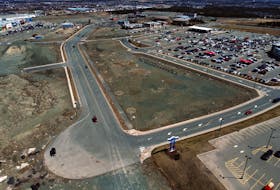ST. JOHN'S, N.L. — After signing on to the Global Covenant of Mayors for Climate and Energy in December, St. John’s has reached the first goal in the commitment: a community greenhouse gas (GHG) emission inventory.
It was announced Wednesday in a news release from the city.
“This energy and emission inventory estimates the energy use and GHG emissions generated by our organization and the community in 2018, our baseline year, that we will seek to improve,” Coun. Ian Froude, lead for public works and sustainability, was quoted in the release.
“Now that we have set a reference point, we can identify significant sources of emissions and energy use and take action to reduce them. These efforts will improve our sustainability and resilience as an organization, and as a community.”

Findings for 2018 indicated city-run operations and services emitted two per cent of the emissions for the municipality — consuming 365,624 gigajoules (GJ) of energy, which emitted the equivalent of 12,457 tonnes of carbon dioxide.
Sixty per cent of that energy came from electricity, 25 per cent from gasoline and diesel, and 12 per cent from heating oil.
The city overall consumed about 14.4 million GJ of energy, which emitted 667,113 tonnes of carbon dioxide equivalents.
Forty-four per cent of that energy came from electricity, 41 per cent from gasoline and diesel, and 15 per cent from heating oil.
Transportation emitted 59 per cent of the community’s GHGs, followed by 23 per cent from the institutional, commercial and industrial sector, 15 per cent from residential and three per cent from waste.
Froude said the next step will be to identify the hazards that climate change may bring, and set a GHG emissions-reduction target for the city’s operations and services, and for the community at large.









